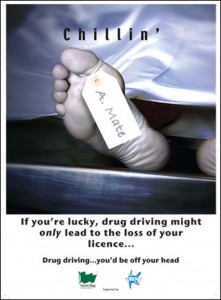The increase in availability of “medical” marijuana only underscores the nation’s tolerance for drug use, whether for pharmaceutical or recreational applications. But that worries federal safety regulators who are finding drugs involved in a growing number of accidents – especially fatal ones.
Just five years ago, a study of 15,363 drivers fatally injured in a traffic accident found 24.1%, or 3,710, had at least one drug in their system that could impact their behavior behind the wheel – whether marijuana, cocaine, heroin, or a variety of other narcotics, stimulants, depressants, steroids and hallucinogens.
Last year, the National Highway Traffic Safety Administration reports, the percentage had risen to 29%. Of the 13,801 drivers tested, 3,952 indicated positive for drug use.
The results don’t specifically point to the increased use of recreational drugs. Even over-the-counter anti-histamines can be dangerous – prescription and over-the-counter medicines were included in the testing.
And NHTSA officials caution that the results of their findings could be misleading. Also, some states are more lax about testing for drug use after a fatal accident. Maine, for example, authorized tests in none of the 2009 fatal accidents, while all drivers killed behind the wheel were tested for drugs in Hawaii, North Carolina and the District of Columbia.
The study underscores growing concerns about drug usage, a 2009 report by NHTSA indicating that a full 16.3% of nighttime drivers were using some form of drug the agency loosely defined as a narcotic. In fact, that term included marijuana, at 8.6%, while cocaine and over-the-counter medicines accounted for 3.9% each.
By comparison, just 2.2% of the drivers tested had a blood alcohol level of 0.08% or higher, which would qualify as drunk, or at least under the influence. One of the challenges is determining if and whether the drugged driver results actually have any specific influence on behavior behind the wheel as there are no current standards that indicate how long after, say, a driver smokes a joint that this behavior can be considered unsafe.
While motorists use of drugs may be rising, incidentally, the use of alcohol has been on a sharp decline. According to NHTSA, 8.8% of nighttime drivers showed blood alcohol concentrations above 0.08% in 1973.

